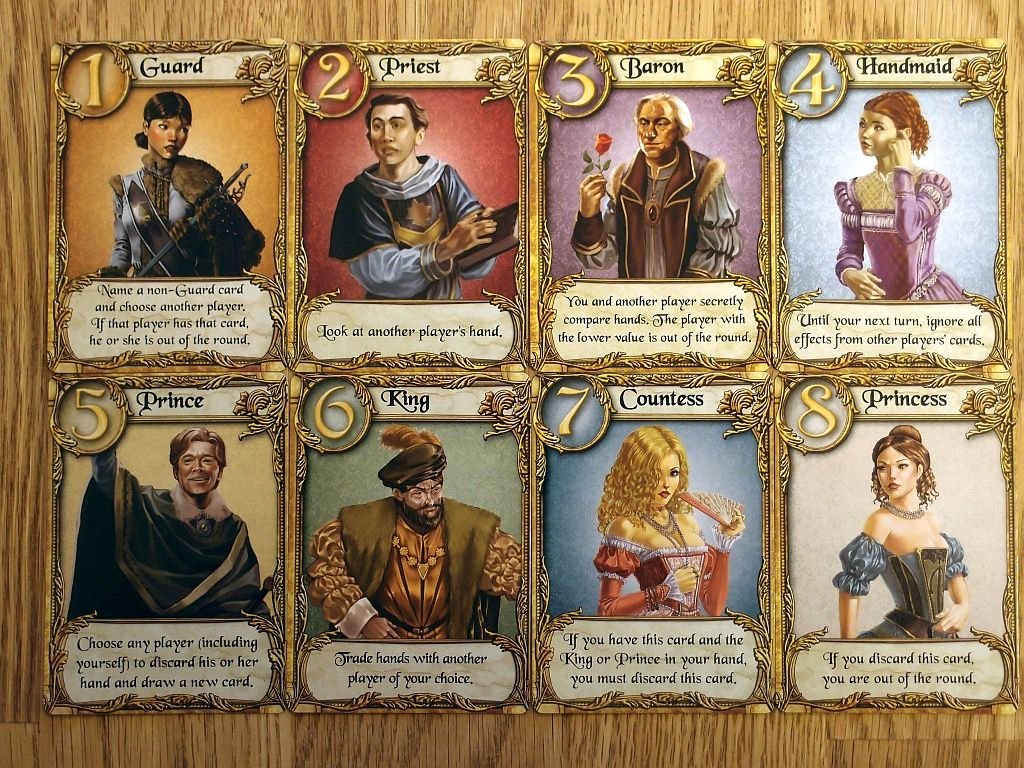Happy New Year to all of you. I’ll be scarce over the next few days, as my grandmother’s funeral is this weekend. My piece on the Marlon Byrd trade is up for Insiders.
Love Letter is probably the best $7 you’ll spend on a game, and the most surprising too – the entire game is a 16-card deck, and the theme looks silly, but the gameplay itself is fun and fast as long as you have more than two players.
In Love Letter, players take on the roles of suitors for a princess who’s about to inherit her country’s throne, and must compete to earn tokens of her affection – little red cubes that come with the game to keep track of scoring. Each round ends with one player winning a cube, and the first player to get four cubes (in a four-player game) wins the game and the princess’ heart. (The threshold is five cubes in a three-player game and seven cubes in a two-player game, but I don’t recommend Love Letter for two players.)
Each round begins with one card removed from the deck and a card dealt to each player. There are eight card types in the deck, each with a special ability or rule printed on it:
On your turn, you draw the top card from the face-down deck and must decide whether to discard your hand card or the new card, although you may be forced to discard one of them based on the combination of cards you’re holding. The card you discard is the one you play – you take the action printed on the card, if there is one, usually directed at an opposing player. Five of the sixteen cards in the deck are Guards, which allow you to point at an opponent and guess what card s/he is holding; if you guess correctly, that player is out of the round. If you discard a Prince card, you can force an opponent to discard his hand card and draw a new one – and if he was holding the Princess card, he’s out of the round. You can try to knock another player out with the Baron, but if she has a higher card than you do, then you’re out of the round. The winner at the end of the round is either the last player standing after all others have been knocked out or the player with the highest-valued card of players still remaining. The game can’t go more than thirteen rounds, regardless of the number of players, and takes maybe 20 minutes once everyone understands the rules.

If you don’t love the theme, two rethemed versions are due in 2015 – one a licensed tie-in with the Hobbit films that adds a new card to the deck, and one a Batman-themed game set in Arkham Asylum that appears to be the same as the original Love Letter deck. The theme didn’t bother us at all – it’s just artwork, really – and there’s enough replay value to get more than your seven bucks’ worth out of it.

